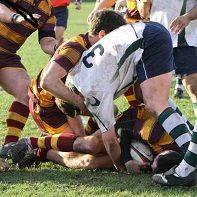Article
Reading Test Can Detect Sports Concussion
Author(s):
Simple reading test for concussion on the playing field reported.

How fast an athlete can read may be more important than how fast that person can run, when it comes to detecting a concussion on the playing field.
A quick and easy vision test administered right at the sidelines is a valuable tool for detecting concussion in athletes, researchers at NYU Langone Medical Center reported in the September 10 issue of Concussion.
Laura Balcer, MD, MSCE, co-director of NYU Langone Concussion Center and professor of neurology, population health and ophthalmology and colleagues conducted a meta-analysis and review of15 studies, encompassing 1,419 athletes of all ages, 112 of whom had concussion.
The test, called the King-Devick test, requires players to read a series of numbered that zig-zag down, across a card as quickly as possible while they are timed with a stop-watch. The test requires the integration of eye movements and number identification. Since the visual pathways in the brain contribute to this ability, disruption of those pathways can suggest a brain injury, so impaired vision can play a key role in diagnosis.
Players take the vision test at the beginning of the sports season to establish a baseline. If all is well, they tend to get faster at reading the cards over time. However, if they have sustained a possible concussion, their reading speed slows down immediately when tested right after the injury.
On average when data from all 15 studies were pooled, athletes with concussion took 4.8 seconds longer to read the cards than they did at their baseline test. Those without concussion took on average 1.9 seconds fewer.
“Our study shows that an easy to administer vision test is a simple effective tool that empowers parents, coaches, trainers—and even physicians—on the sidelines to have a protocol for deciding if an athlete should be removed from play,” Balcer said in a news release.
Current sideline protocols test cognition and balance, but not visual performance. When used alone, the test detected concussion in 86 percent of the 112 concussions studied. When combined with balance and cognition tests, a worsening score in any of the three tests identified concussion correctly 100 percent of the time.
An estimated 4 million sports-related concussions each year in the U.S. The long-term effects on brain function are becoming an increasing concern, particularly among those who play contact and collision sports, as well as military personnel with blast-induced concussion.
This tool as part of a simple battery of tests assessing cognition and balance can raise a flag for those athletes that require follow-up with a medical professional,” noted study co-author Steven Galetta, MD, Philip K. Moskovitz, MD, Professor and Chair of Neurology, Langone Medical Center. “In the heat of a game, there is a lot of chaos and confusing so anything that helps eliminate guesswork is needed.”





